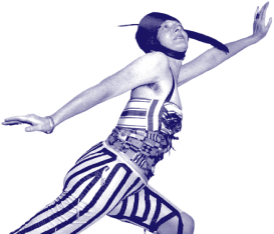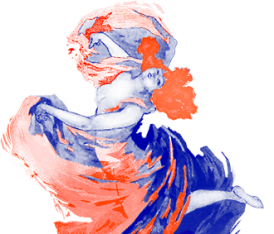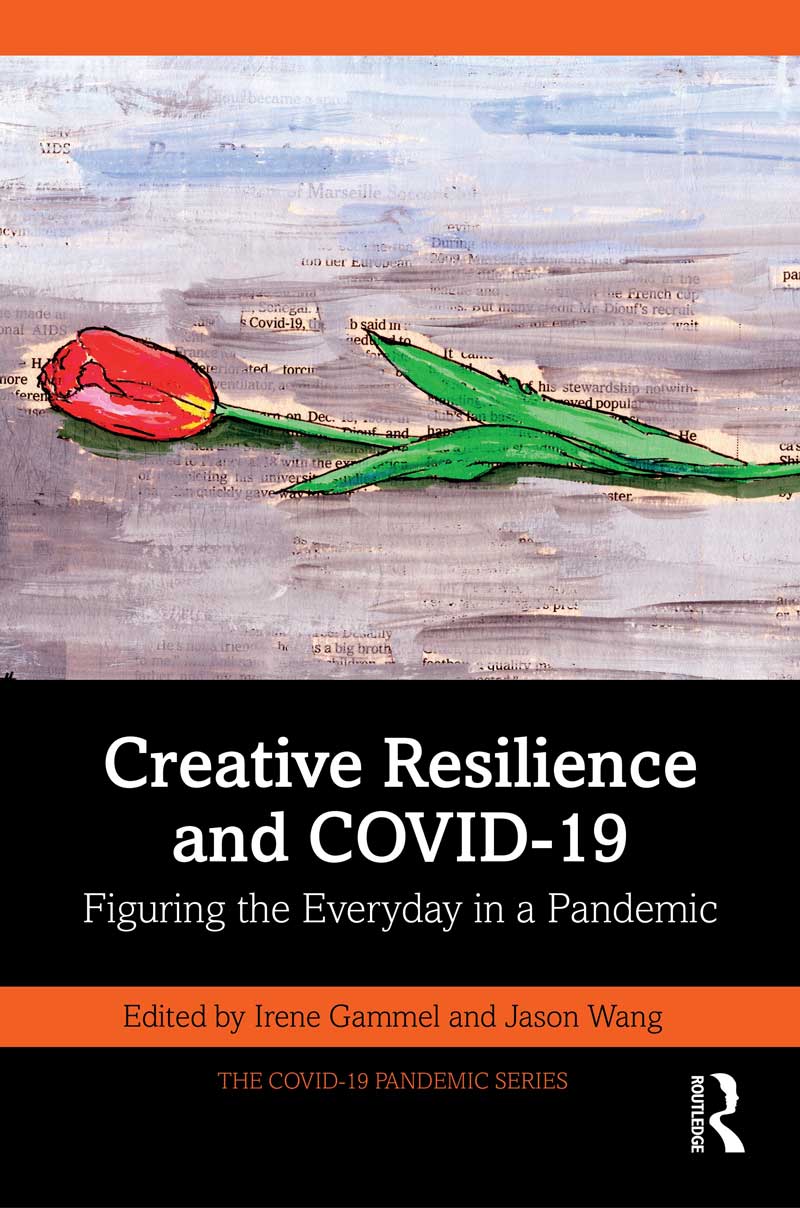 Creative Resilience and COVID-19: Figuring the Everyday in a Pandemic
Creative Resilience and COVID-19: Figuring the Everyday in a Pandemic
Edited by Irene Gammel and Jason Wang
Creative Resilience and COVID-19 examines arts, culture, and everyday life as a way of navigating through and past COVID-19. Drawing together the voices of international experts and emerging scholars, this volume explores themes of creativity and resilience in relation to the crisis, trauma, cultural alterity, and social change wrought by the pandemic.
The cultural, social, and political concerns that have arisen due to COVID-19 are inextricably intertwined with the ways the pandemic has been discussed, represented, and visualized in global media. The essays included in this volume are concerned with how artists, writers, and advocates uncover the hope, plasticity, and empowerment evident in periods of worldwide loss and struggle—factors which are critical to both overcoming the COVID-19 pandemic and fashioning the post-COVID-19 era. Elaborating on concepts of the everyday and the outbreak narrative, Creative Resilience and COVID-19 explores diverse themes including coping with the crisis through digital distractions, diary writing, and sounds; the unequal vulnerabilities of gender, ethnicity, and age; the role of visuality and creativity including comics and community theatre; and the hopeful vision for the future through urban placemaking, nighttime sociability, and cinema.
The book fills an important scholarly gap, providing foundational knowledge from the frontlines of the COVID-19 pandemic through a consideration of the arts, humanities, and social sciences. In doing so, Creative Resilience and COVID-19 expands non-medical COVID-19 studies at the intersection of media and communication studies, cultural criticism, and the pandemic.
Order your copy at the Routledge website.
Book Launch
Podcast: A Conversation with the Editors
Creative Resilience and COVID-19: A Conversation with the Editors from MLC Research Centre on Vimeo.
About the editors
Irene Gammel is Professor of Art, Literature, and Culture and Director of the Modern Literature and Culture (MLC) Research Centre at Ryerson University. Her research focuses on gender and modernity in literary and visual culture.
Jason Wang is a Postdoctoral Fellow at the Modern Literature and Culture Research Centre at Ryerson University. His research explores how modernist and contemporary literature and media encode power, politics, and social values. He also cohosts the MLC Pandemic Webinar Series.
Both editors cohost the MLC Pandemic Webinar Series, which explores the social, cultural, and creative dimensions of the COVID-19 crisis through arts, humanities, and social sciences research by a network of international scholars.
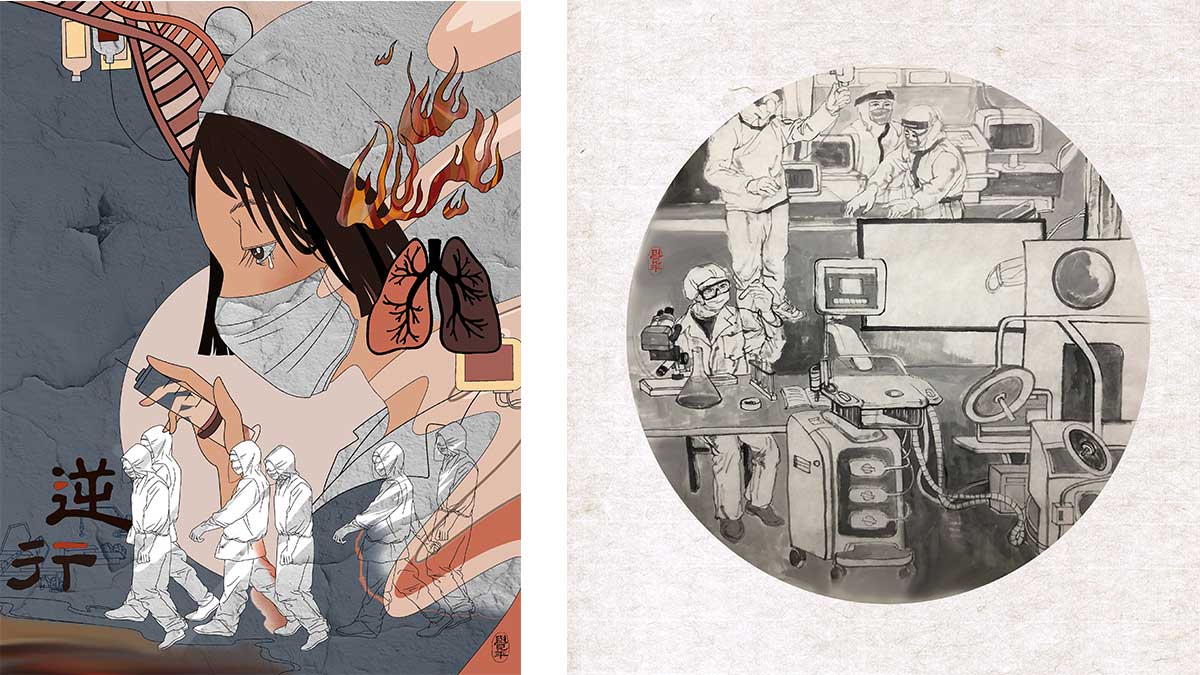
Table of Contents and Abstracts
Introduction:
Creative Resilience and COVID-19: Figuring the Everyday in a Pandemic Irene Gammel and Jason Wang
Part 1: Crisis Space and Time
-
The Deadly Air We Breathe: How Infectious Illness Built the Modern City
Mitchell HammondFor many historians of disease and medicine, the first months of the coronavirus pandemic were disorienting and sobering. The question “What can history teach us about COVID-19?” seemed omnipresent in print and digital media. Yet historical perspectives on the crisis not only came with the standard caveats—that each epidemic and historical era is distinct and should not be generalized—but also quickly made clear that even protocols based on lessons learned from the influenza pandemic in 1918-19 or SARS in 2003 had limited value. Nonetheless, what history does offer is a trajectory to understanding a modern approach to epidemics which was shaped by events centuries ago. During the late-sixteenth and seventeenth centuries, pandemic cities in Europe responded by introducing quarantines anticipating the steps taken during COVID-19. This essay argues that the histories of infectious diseases and modern cities have been intertwined, not only because cities foster the spread of disease but also because accounts of urban events have framed our understanding of epidemics and epidemics effected enormous changes in the cities.
-
"Why has the outbreak turned so deadly?" Diary from a Quarantined City
Irene Gammel and Jason WangWhat are the form and function of the lockdown diary during COVID-19? This essay explores Chinese writer Fang Fang’s Wuhan Diary: Dispatches from a Quarantined City (2020), which was published online (25 January – 24 March 2020) for a mass audience of Chinese readers during lockdown in Wuhan. The text became an instant bestseller in COVID-19-traumatized Euro-American countries when it was published as a book in English translation in 2020. This essay considers the diary as an outbreak narrative whose goal is the containment of the pandemic before considering the online medium used to publish these entries, a medium that reshapes the traditional diary genre itself. Fang Fang’s performance of the self in public assumes a crucial function, as do the participatory dynamics involving multiple audiences which profoundly shape this online diary. Ultimately, Wuhan Diary functions as a social text which engages its multiple audiences rhetorically in helping navigate and contain the pandemic.
-
Listening through a Pandemic: Silence, Noisemaking, and Music
David Cecchetto and Cameron MacDonaldWhat does it mean to listen through and to the pandemic? In intersecting sound studies with COVID-19 studies, this chapter provides an account of listening itself, and its relationship to proximity and intimacy during lockdown. The chapter considers several sonic phenomena of the pandemic: the uncanny silence of an urban soundscape, played out against emptied city streets globally during several waves of the pandemic; the noise of the city rising in support of frontline workers, but also in protest against governments; and the lyrics of popular music from indie to hyperpop. By considering sounds and aurality as spaces of becoming, this chapter argues that the sounds of the pandemic offer different horizons for resilience, foregrounding also human flux and change.
-
Netflix and Chills: On Digital Distraction during the Global Lockdown
Dominic PettmanThis chapter chronicles the author’s own lockdown in New York City beginning with the onset of the pandemic in March 2020 and ending with May 2020, when the pandemic was still ongoing. Through embodied reflections, the chapter communicates the unsettling affective experience of mass quarantine, highlighting also the media’s function of distraction for those having to cope with uncertainly and boredom. By engaging with theories by Martin Heidegger, Giorgio Agamben, and Gilles Deleuze, the essay looks at the role of popular culture Netflix shows during the lockdown, such as The Circle (2018-present), a British reality competition show, in which players, each in their separate apartment, communicate only through social media apps; and Love is Blind (2020-present), an American dating reality series where couples cannot see each other before the engagement.
Part 2: Vulnerability and Resilience
-
Killing Swiftly: The Effects of COVID-19 on the Experience of the Elderly
Geoffrey ScarreThis essay discusses the increase in the sense of vulnerability that many older people felt with the onset of COVID-19, which reverses the sense of security in old age which has been developing over recent decades. Pascal Bruckner’s book A Brief Eternity: The Philosophy of Longevity takes, as its starting premise, the idea that since 1945 “life has ceased to be short, as ephemeral as a passing train.” This was originally published in French in 2019 but, in the short interval since then, has become a very dubious proposition. The essay explores how attitudes towards mortality are changing among the elderly as life during COVID-19 once again takes on something of the sense of fragility that it possessed through most of history.
-
“He’s thinking about sex, I’m thinking about survival”: Women’s Sexual, Domestic, and Emotional Labor During the COVID-19 Pandemic
Breanne FahsDrawing from the author’s experiences as a psychotherapist during the pandemic, this essay highlights the ways that the COVID-19 pandemic lockdowns and quarantines exposed the fault lines of gendered labor and foregrounded women’s role in engaging in multiple forms of unpaid, often unseen labor. Specifically, the essay draws on brief descriptions of psychotherapy cases to discuss women’s sexual labor, domestic labor, and emotional labor during the pandemic and how women negotiated not only their own existential crises and workforce pressures, but also the highly gendered forms of labor within the home. Gendered labor permeated women’s experiences of the pandemic, saddling them with undue burdens and at times hobbling their aspirations for self-care, career advancement, and rest.
-
“It’s like not a very Marshallese way of life”: Marshallese Cultural Resilience during COVID-19
Ramey Moore, Pearl A. McElfish, Sheldon RiklonThe COVID-19 pandemic has caused worldwide social disruption, but these social disruptions are not equally distributed across communities. For Marshallese Islanders, living in the United States under the Compact of Free Association (1986), these disruptions are especially concerning due to strong cultural values for direct, face-to-face communication in informal settings, called talk story. The Marshallese have been deeply affected by the COVID-19 pandemic, with infections, hospitalizations, and mortality rates that far exceed other populations in the United States. The Marshallese have a strong collectivist culture, and the COVID-19 pandemic and the public health responses intended to mitigate its spread have affected many aspects of Marshallese culture and everyday life. In this essay we explore Marshallese experiences during the pandemic, and creative resilience practiced by the community in meeting culturally important social needs through the use of telecommunication technologies. For the Marshallese, the COVID-19 pandemic’s social effects were most salient when discussing the rhythms of everyday life, including visiting neighbors, friends, elders, cultural celebrations, and sharing of food with others in their community. We argue that combining health research with nuanced culturally grounded perspectives allows us to see a more complete picture of the impact of the COVID-19 pandemic, particularly for communities with historical traumas.
-
Sweden, COVID-19 and Invisible Immigrants
Christian ChristensenIn this chapter, international media coverage of Sweden’s infamous “light touch” COVID-19 strategy is connected to another subject that dominated coverage of Sweden: immigrants and immigration. For years, immigrants were framed — by both right-wing and supposedly “progressive” outlets — as the central issue facing Swedish society, and as a problem and threat. Stockholm has been the epicenter of the COVID-19 outbreak, and it is parts of the city with the highest percentage of residents with immigrant background that have been hit hardest. In other words, the very people vilified by the media when arriving as refugees are the ones now bearing the brunt of COVID-19. Coverage of this element of the impact of COVID-19 on Sweden has been striking by its absence. Ignoring this part of Sweden’s COVID-19 story erases the place of immigrants in Swedish society. This erasure, in turn, reinforces vague, stereotypical notions of Swedish social, economic, political and ethnic homogeneity that makes real analysis impossible.
Part 3: Memory, Visuality, and Creativity
-
Threshold Spaces: Visualizing COVID-19 and the Resilient Power of the City
Irene Gammel and Natalie IlsleyPrevious studies (see, for example, Julia Sonnevend) have noted the plethora of COVID-19 visual imagery that act as powerful communicative tools. We extend these scholarly insights by focusing on the emotive visual dynamics and social operations of photograph in two city case studies — artists Bill Hayes’ and Ruth Corney’s respective New York and London photography at street level during the first wave of COVID-19 in 2020. More specifically, by taking viewers inside threshold spaces such as doorways, windows, and front yards, we argue that these artists’ images dramatize possibilities of creativity and empathy at the borders of inside/outside, visible/invisible, and visual/verbal. They reveal the emotive interaction forged between subjects and the quotidian materials of their sentient environment. Ultimately, the chapter documents how these images help guide viewers through the emotive hardships of the pandemic illuminating the operations of creative resilience, while actively soliciting the viewer’s empathy.
-
How Drawing Can Help Us See One Another: From Graphic Medicine to Diary Comics
Emmy WaldmanThis chapter discusses graphic narrative as an emerging realm of possibilities for documenting and responding to the trauma of the pandemic. The essay draws on theories of graphic medicine to survey the depth and breadth of documentary comic responses to COVID-19. The essay explores Pandemix: Quarantine Comics edited by Whitney Matheson and Dean Haspiel and the New York Times’ Diary Project, featuring quarantine diary comics. The essay gives special attention to the drawn comics diary, analyzing how it helps navigate the everyday experience of life amid the contracted spaces and complex temporalities in quarantine and in the midst of a pandemic.
-
Going Digital in a Small City Hub: Community Theater and Dog Performance Events during Lockdown
Karin Beeler and Stan BeelerWith the COVID-19 pandemic, the screen arts in the form of video production, Zoom recordings and the posting of videos on YouTube and Facebook have become important tools to maintain community activities even while physical interaction is impossible. They provide a semblance of normalcy by facilitating a social “everydayness” in the face of dramatic disruption. While many essays in this volume focus on the impact of the pandemic in the large metropolis, this essay is concerned with the community life of the smaller city. More specifically, this essay addresses the value of screen culture in two key areas: the production and performance of community theater via Zoom; and the use of video technology and platforms for the recording and viewing of online canine sports. This essay argues that the shifting of face-to-face interaction to various forms of online and onscreen expression has created new ways of connecting performers and audiences while preserving a sense of “everydayness” during a time when in-person interaction is extremely limited.
-
Becoming Host: Zooming in on the Pandemic Horror Film
Simon Turner and Stuart J. MurrayThis chapter addresses the uncanny effects of computer screen horror films during the pandemic by focusing on the British horror movie Host (2020), an independent 56-minute film directed by Rob Savage during the first wave of the COVID-19 pandemic. The horror genre typically enables a kind of identificatory catharsis, while also providing its viewership with the comfort of knowingly indulging in fiction. And yet, Host unsettles this very comfort and conceit. This essay argues that Host’s originality—and its uncanny horror—owes less to its content than to its visual form. The film’s unrelenting and unbroken point of view via the Zoom interface frames the entire film through a medium become all too familiar during the pandemic. This familiarity almost guilelessly interpellates the viewer as a hapless participant in the murderous mayhem that unfolds both on-screen and, by extension, in a pandemic present marked by existential threat and mass death.
Part 4: Adaptation, Hope, and Social Change
-
Playing with the City: Leisure, Public Health, and Placemaking during COVID-19 and Beyond
Troy D. GloverThis chapter explores the use of leisure in navigating everyday life during the COVID-19 pandemic. It discusses how leisure-in-public — those activities that take place outside of the home in the view of others for eudaimonic (i.e., personal enrichment) and/or hedonic (i.e., pleasure) purposes — offer (1) expressions of resilience, hope, and creativity in response to a public health crisis, and (2) potential post-pandemic placemaking strategies to bolster social connectedness, combat social isolation, and improve community capacity. Public health restrictions during the pandemic, not surprisingly, constrained leisure-in-public by imposing physical distancing measures, stay-at-home orders, and amenity/event closures. Even so, people responded by going outdoors and exploring the public realm for leisure and local placemaking initiatives. These efforts, though sometimes undertaken in defiance of public health guidelines, resulted in physical activity that thickened the thin ties of community life and boosted the social fabric of neighborhoods in response to the imposing threats of social isolation, loneliness, and pandemic fatigue. This chapter explores these and other related developments during the pandemic to underscore the social relevance of leisure as a public health and placemaking strategy.
-
Rethinking the Spaces of Night-time Sociability
Will StrawThis essay explores how citizens re-imagine the experience of bar and club sociability in a post-pandemic world in relation to architecture, the organization of space, and leisure activity. The post-confinement future after COVID-19 affects the quality of being sociable while the effects of social and spatial isolation prompt different norms and rules of social interaction. The post-pandemic nightlife in cities needs to be re-evaluated in order to extend the spatial-temporal paradigm of sociability. Ultimately, the way we think about night life will change during the post-pandemic era, as the pandemic casts its long shadow.
-
The End of Kino as We Know It? Reflecting on the Future of Cinemas in Germany and Beyond
Claudia KotteUsing the 2020 Berlinale as a starting point, this essay explores the impact of the COVID-19 pandemic on movie theaters (called Kino) in Germany. The essay argues that given the meteoric rise of the streaming giants and their substantial impact on film production, narrative conventions, and reception, the long-term fate of Kino is anything but certain, prompting calls for state intervention and public funding of cinemas. The essay foregrounds specific shifts, including convergences, with cinemas and distributors in Germany moving their programming online as a way of reconnecting with their audience. Conversely, new online platforms have experimented with creating synergies between streaming and theatrical modes. Ultimately, the pandemic and post-pandemic eras are marked by accelerated cultural transitions, convergences, and adaptations.
-
What COVID-19 Has Taught Academics: Historical Arguments for the Future of In-Person Teaching
Kai BremerUsing Wilhelm von Humboldt’s ideal of education as Bildung, with its focus on the cultivation of the self, this essay argues for fostering live academic participation in the post-pandemic era. The author homes in on the in-person, seminar-style teaching which was deprived of key elements during COVID-19 due to the abrupt switch to the digital format. No matter which communication tools are used in remote teaching, chat software usually does not display more than the name of the participants. Conference or meeting software can show faces live, but the tiles are usually so small that little more than the basic features of the face are recognizable, that is, if the camera is not switched off altogether, or the connection is too shaky, or the students — justifiably — do not wish to give insights into their private spaces. Consequently, digital teaching cannot convey the full mimicry, gestures, and engagement that in-person teaching provides through the live dialogue. Thus, this essay makes an argument for fostering in-person teaching in the future.
Endorsement
A thoughtful and timely book on the unprecedented non-medical effects of the COVID-19 pandemic on the intersections of media and communication. This book raises important questions on the new veracities of life during the pandemic and helps us to understand present-day realities. The clarity of authors’ writings on various topics dealing with media and communication makes the book accessible to students, academics as well as anyone who would like to make sense of the impact of the pandemic on everyday life.
–Valerie Visanich, University of Malta, author of Education, Individualization and Neoliberalism: Youth in Southern Europe (Bloomsbury)
Irene Gammel and Jason Wang have put together an intellectual's guide to the COVID-19 pandemic's effects on our everyday lives. From labor struggles to "Netflix and chill," this edited volume explores how the pandemic rearranged everyday life, and it connects those changes to the medical, political, and social struggles that have defined this moment. Reading these essays, I remembered things from the pandemic that I had already forgotten, and I am glad to have this book as a way to keep that time with me.
–Daniel Worden, Associate Professor of Art, Rochester Institute of Technology, USA
In this time of crisis, never had there been a better time to spotlight the cultures and practices of everyday life. The contributions to this wonderful book show in compelling and often heart-breaking ways just what it has been like to live with fear, grief and loss in pandemic conditions. But there is also an abundance of hope and meaning making emerging across these essays, captured in ways that invite the reader to enter into the worlds of people enduring these COVID times.
–Deborah Lupton, Co-Author of The Face Mask in COVID Times
Creative Resilience and COVID-19 offers a vital record of these times, tracing how, amid the vast scale of a global pandemic, the patterns and details of daily life profoundly change. ... The essays illuminate the overt and subtle shifts the pandemic has brought to individuals and communities, asking central questions about survival, resilience, and recovery. An invaluable, timely volume for the COVID era.
–Elizabeth Outka, professor of English at the University of Richmond and author of Viral Modernism: The Influenza Pandemic and Interwar Literature (Columbia 2020)
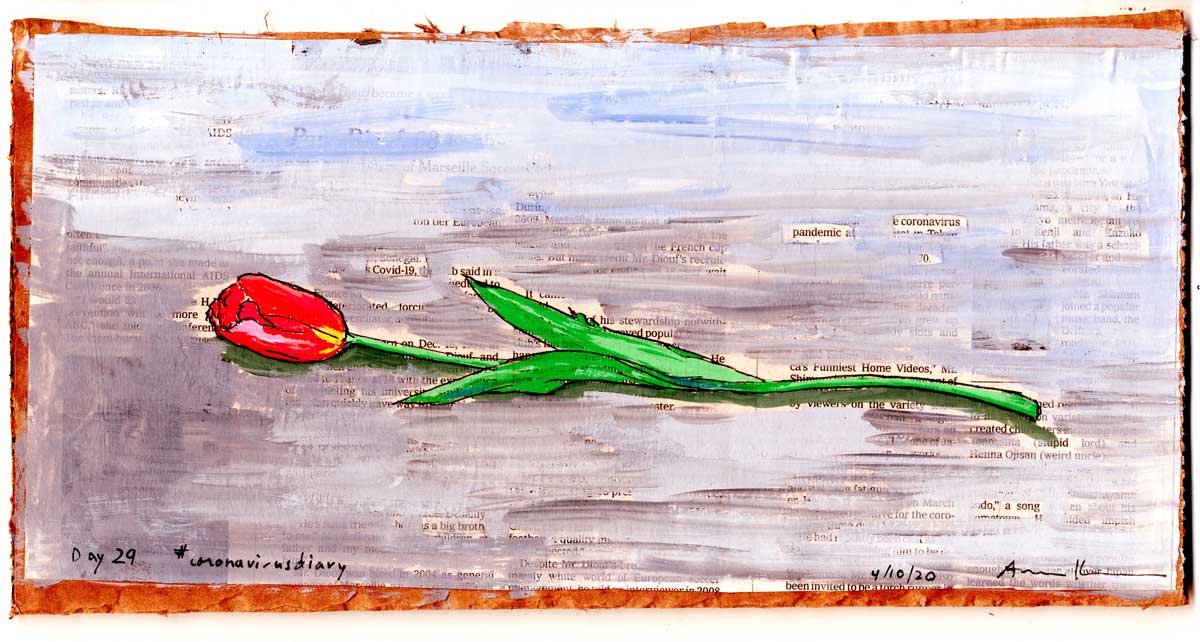
Sponsors

Image credits
Wang Jueping, 逆行 Against the Grain, February 2020, digital illustration. Courtesy of the artist.
Wang Jueping, 争分夺秒战疫情 Race against Time to Fight the Epidemic, April 2020, ink on paper, 65 x 65 cm. Courtesy of the artist.
Amitava Kumar, Coronavirusdiary Day 29, 10 April 2020, drawing. Courtesy of the artist.




